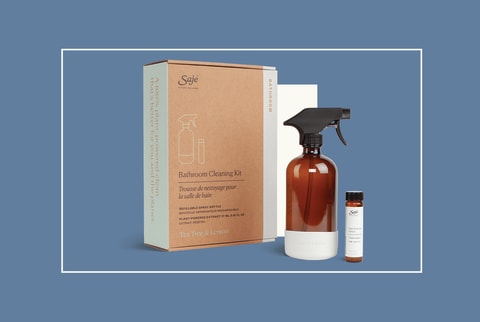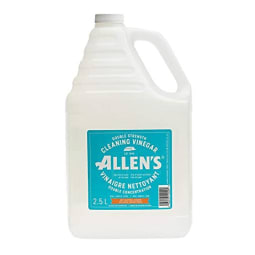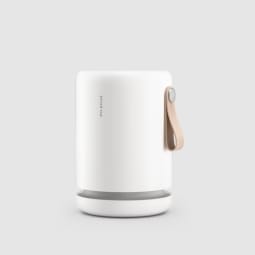Many people believe that, unless they have a water intrusion in the home, they won’t have to worry about mold—when, in fact, it requires very little water for mold to grow. Studies estimate that 30 to 50% of all structures have damp conditions optimal for the growth and buildup of biological pollutants, such as mold. In warm, moist climates, this percentage is likely to be higher. In other words, there are a few unsuspecting places mold could be hiding in your home. According to certified mold mitigation expert and host of The Toxic Mold Podcast Steve Worsley, there’s no such thing as a “mold-proof” home. Mold and mildew sightings are common between shower tiles, on the caulking around the bathtub, and under the kitchen sink. We’ve all tried to tackle these stains with bleach, but just how effective is that? And surely there are less toxic ways to spot-treat mold. Read on to explore how to best control mold growth and to find our picks for the best natural mold killers. According to Lauren Tessier, a naturopathic physician specializing in mold-related illnesses, there’s a distinction to be made between ‘killing’ mold and ‘removing’ it. “When people think of remediation, or cleaning of moldy spaces, they often think of simply killing the mold or fungus,” explains Tessier. “When remediating, it is more important to focus on the concept of physically removing the mold, and the moldy contents from the space, rather than just simply killing it.” If you’re using a fungicide, there may be instances in which the mold (and spores) survive the fungicide. “Stressing a mold by applying a fungicide can cause it to initiate its natural defenses,” says Tessier. These defenses, depending on the species, could be poisonous mycotoxins released as spores into the air. And when you do successfully kill mold, it’s crucial to remove all traces of the mold thereafter. “Dead mold is dangerous mold,” says Tessier. “Any mold fragments that are left behind after fungicide use can harbor mycotoxins, which can result in local irritation and even severe allergies,” she adds. Because we know mold can release spores into the air, an air purifier can be a wise investment to help enhance air quality by destroying pollutants such as bacteria, mold spores, and volatile organic compounds through a process of oxidation. So, while bleach can be a great fungicide for nonporous surfaces, it is not a good fungicide for porous surfaces because they can’t be rinsed, scrubbed, and thoroughly dried. Instead, these surfaces can trap the mold fragments and water, possibly harboring ideal growing conditions for the next round of mold. Tessier stresses that if someone uses bleach to clean mold, that person could be on the receiving end of a double dose of toxicity, through exposure to mycotoxins and toxic chlorine. Other antifungal agents, including vinegar and tea tree oil, have shown promise in combating mold. Studies2 have indicated that vinegar (4.0% to 4.2% acetic acid) inhibited the growth and sporulation of one species but not the other, while tea tree oil was shown to inhibit the growth of both species. This raises the question: Could a 10% acetic acid be that much more effective? While it seems logical, there is insufficient evidence to prove it. Tessier prefers the use of hydrogen peroxide (3% acetic acid) for its ability to kill mold without the toxic risk imposed by chlorine exposure. Hydrogen peroxide also bubbles when it is put into contact with living substances, which helps let you know it’s doing its job. The downfall, according to Tessier, is that spores can still survive peroxide application, and it does leave behind water and mold fragments (similar to bleach). Per Tessier, a growing body of research suggests that a higher concentration of hydrogen peroxide, applied over a longer period of time, can potentially induce more fungicidal activity. However, there are some molds/fungi that are more susceptible to this (and other) fungicidal interventions. That said, while this is an impactful, healthier solution, it won’t be effective against all mold strains, so if you are dealing with a larger issue, it is still best to consult a professional. Because this is a vinegar solution, you’ll also want to spot-test it before applying it to large surfaces. This natural mold killer is completely free of toxic stabilizers and leaves no residue behind. The formula is biodegradable and is actually beneficial to the environment due to its oxygen-enhancing capabilities. In addition to relying on this for its mold-fighting benefits, you can also use it to remove stains on laundry, wash your foods (fruit, veggies, nuts, seeds, and grains), and even for first aid purposes on your throat, mouth, and ears—that’s how safe the ingredients are. We love how compact this air purifier is and the fact that it’s actually aesthetically pleasing (way more so than most others on the market). The brand has a corresponding app, which you can use on your iPhone or iPad to control the purifier’s features. An energy-efficient choice, it’s incredibly quiet, too, at just 39 decibels on low speed.







